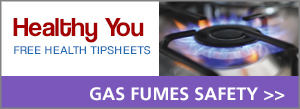A typical visit to your doctor will likely start with having your blood pressure taken. Have you ever wondered why?
High blood pressure is a common and serious health condition that affects about 75 million people in the United States, or nearly one in three adults. Also called hypertension, high blood pressure increases your risk for heart disease and stroke — the first and third leading causes of death. High blood pressure can lead to other serious health conditions as well, such as congestive heart failure, kidney disease and blindness. Because there are often no warning signs or symptoms, many people have high blood pressure but don’t know it. For that reason, it is often called “the silent killer.”
Anyone can develop high blood pressure, no matter their age, race or gender. According to the National Heart, Lung and Blood Institute, most of us will develop high blood pressure at some point in our lives. Also, certain groups are at greater risk. Blacks, for instance, are more likely to develop high blood pressure earlier in life than whites.
But here’s the good news: High blood pressure can be managed, delayed or prevented by adopting some simple lifestyle changes.
“It’s not curable, but it’s very treatable,” says George Bakris, MD, a professor of medicine and director of the Hypertensive Diseases Unit at the University of Chicago.
By the numbers
Blood pressure is the force of your blood pushing against the walls of your arteries. With each beat, your heart pumps out blood into your arteries. Normally, your blood pressure rises and falls during the course of your day. But if this pressure rises and stays high over time, it’s called high blood pressure, and it can damage your body in many ways.
When your doctor measures your blood pressure, it is recorded as two numbers, such as 120/80. The two numbers tell you the amount of force pushing against your artery walls when your heart is contracting and when it is at rest. The top — or systolic — number measures the pressure in your arteries when your heart beats. The bottom — or diastolic — number refers to the pressure in your arteries when your heart is at rest, between beats.

Photo courtesy iStockphoto: doctor, Gene Chutka; salt, Andrew Johnson
A reading of 120/80 or lower is considered normal blood pressure. A reading of 140/90 or higher is high blood pressure. The best way to determine if you have high blood pressure is to measure it throughout the day, studies show.
If you have high blood pressure, there are many medications that can help keep your condition under control. It’s important to see your health care provider regularly and take your medications as prescribed.
Following a healthy lifestyle can also help you prevent or delay high blood pressure, or keep it under control if you already have it — and reduce your risk of related health problems.
Like too many Americans, you might be carrying some extra pounds. Being overweight increases your risk of developing high blood pressure. And here’s another alarming fact: Your blood pressure rises along with the numbers on your bathroom scale. Losing just 10 pounds can lower your blood pressure.
Eat a healthy diet
A diet that’s rich in whole grains, fruits, vegetables and low-fat dairy products can lower your blood pressure if it’s already too high, or reduce your risk of developing high blood pressure. Also be aware that drinking alcohol in more than moderate amounts can raise your blood pressure by several points as well as reduce the effectiveness of blood pressure medications.
Sodium also has a role to play in your blood pressure. Your body needs a little sodium chloride, or salt, to work properly. But most of us get far more sodium than our bodies need, and high sodium consumption raises your blood pressure. Keep in mind that most of the sodium you consume comes from processed foods and restaurant foods, not from what you use in your cooking or add at the table.
Get in the habit of checking the nutrition labels on packages. The 2010 Dietary Guidelines for Americans recommend limiting sodium to less than 2,300 milligrams per day.
Keep it low through exercise
In addition to shedding some pounds, stepping up your level of physical activity is beneficial for your blood pressure. According to Bakris, 30 minutes to 40 minutes of aerobic exercise — “not weight lifting, not toning, not upper body, but lower body exercise such as walking fast, swimming (or) treadmill,” is ideal.
“Doing that for 40 minutes, five times a week, will definitely help reduce your blood pressure,” Bakris says.
- Copyright The Nation’s Health, American Public Health Association









